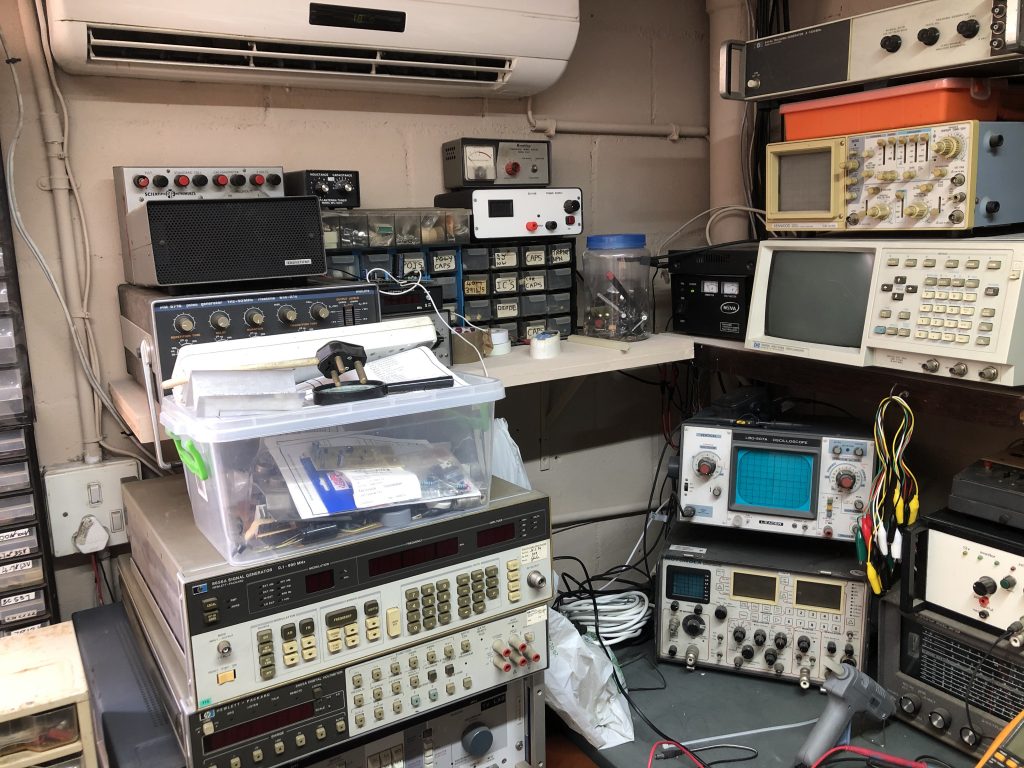Restoration Tips
Restoration Tips:
It’s very important to note the operating voltage of the set under restoration – 110v, 220 volts AC or battery DC operated only.
I normally do a virtual check just to determine if the set has the correct valve line-up and if there is any loose wiring inside the set. Inspect the power cord and replace if necessary. Next, replace filter capacitors on the power supply section and check voltages of the power supply. Filter capacitors can be re stuffed to keep the set looking like the day it was bought. More on that later. Take care as very high voltages are present in this section. Make 100% sure you have the correct circuit diagram of the set.
I then start to replace all wax/paper capacitors section for section, taking photos as I replace them to make sure they are all correctly replaced as some sets have large amounts of capacitors. I don’t replace sliver mica capacitors to start with. Only when I get to alignment and I suspect silver mica disease, then I will replace them. The next step is to check resistor values and replace only resistors that are way out of tolerance. I must admit I hardly replace any resistors unless the resistors are out of tolerance and in a critical area of the radio.
After all the above has been checked, I start with RF and AF alignment – some radios are very advanced and this process may take some time to get the radio more sensitive and selective. Radios with metal housings especially, must be aligned while complete as this will influence the accuracy. Most radios have holes at the bottom of the chassis to align properly with the non-metal tool tuning the capacitors and coil slugs. Take note and be very careful of the tuning slugs as they break easily. Most often the alignment process must be done a few times to get the frequency in relation to the dial spot on. Some radios are almost 100 years old! More on this later with short videos.
Basic Test Gear and Tools in your Workshop
You don’t really need advanced test gear to restore antique radios. A RF and AF signal generator, multi-meter , signal tracer and frequency counter HF to VHF will be more than enough. An oscilloscope will be advantageous but you can work your way around it. A variac is a vital tool on any work bench. I use mine daily. VTVM – vacuum tube volt meter to “see” the dip while peaking the IF (immediate frequency) cans up. A valve tester will also be helpful but in my experience I hardly switch my valve tester on because you might find 1 in every 50 radios you restore that actually has a faulty valve. I normally have some spare valves and will slot one in if I suspect the valve could be faulty. RF sniffer can be used to test if the oscillator are working. Temperature controlled soldering iron will be a very good choice. Can also wire a normal stove switch to control the soldering iron with pilot light and calibration. Make sure to use good light in your workshop and a LED light torch to see into those dark places sometimes necessary to id some components. Side cutters , long nose pliers and set of good screwdrivers. Magnifying glass to help reading small print on circuit diagrams. I have added some diagrams to homebrew your own basic test equipment. Here are some pictures of my homebrew test gear. I also use a radio that has been restored on my workbench to use as marker and to make sure that what I am listening to in relation to the dial while restoring the radios. I will post some updates on restoration projects.
Dials
Broken glass dials or dials missing lettering greatly reduce the visual value of the receiver. Reproduction of lettering will be possible but unless you have got copy of the dial to be screen printed this process will be very expensive.
Control Knobs
Are they all present, and if they are, are they original? Unfortunately only experience can help in the latter assessment. Be warned missing knobs can be a problem to source. Some 1930s receivers did use a different, larger knob for tuning.
Chassis Condition
Condition is everything and this will reduce the price dramatically. Wooden cabinets were finished with a variety of methods over the years. Some finds are over 100 years old and in a very good condition.
Where To Find Antique Radios
Radios are among the most complex and important technical systems ever devised. By the early 1930s, the great names such as Ekco , Murphy , Ultra and Bush had become familiar to the British public; America had, among others. makes such as RCA, Crosley, Philco and Emerson, and continental Europe had makes such as Philips, Blaupunkt and Grundig.
Boot sales at amateur radio clubs and antique shops might have the occasional radio for sale. Internet auctions have become extremely popular recently. Learn to recognize the tricks of the trade – terms such as “Art Deco” do not truly apply to radios manufactured after World War II.

